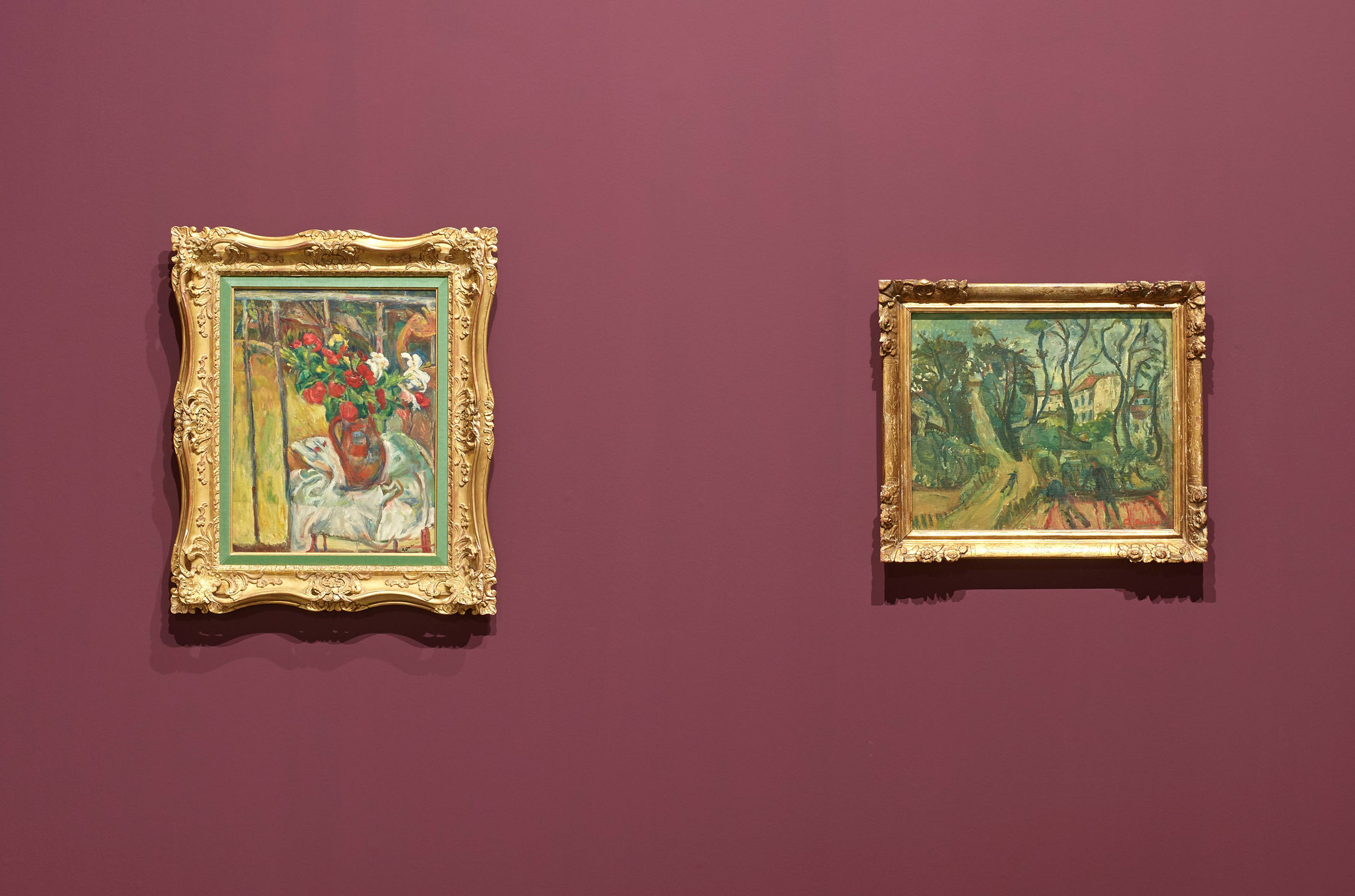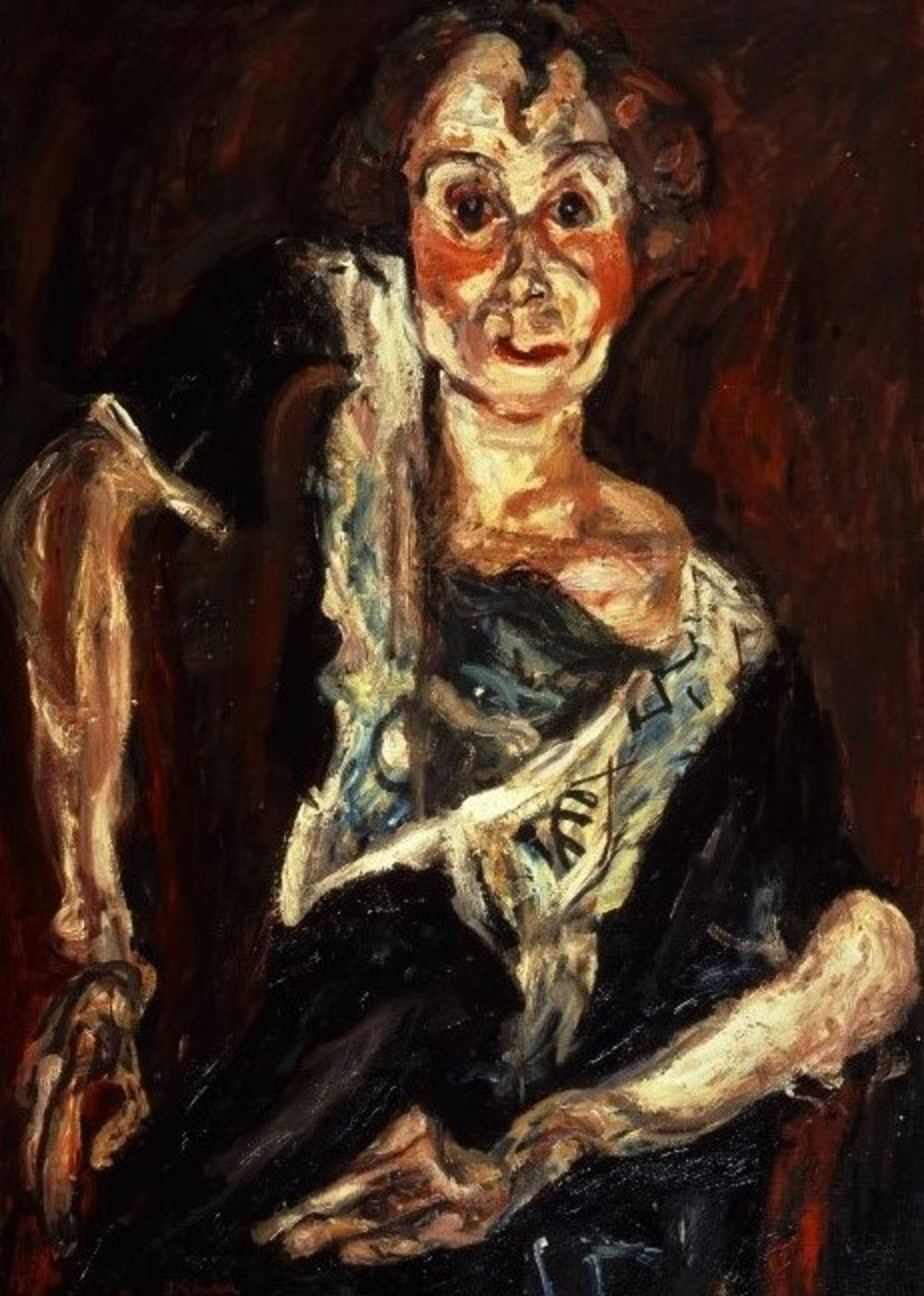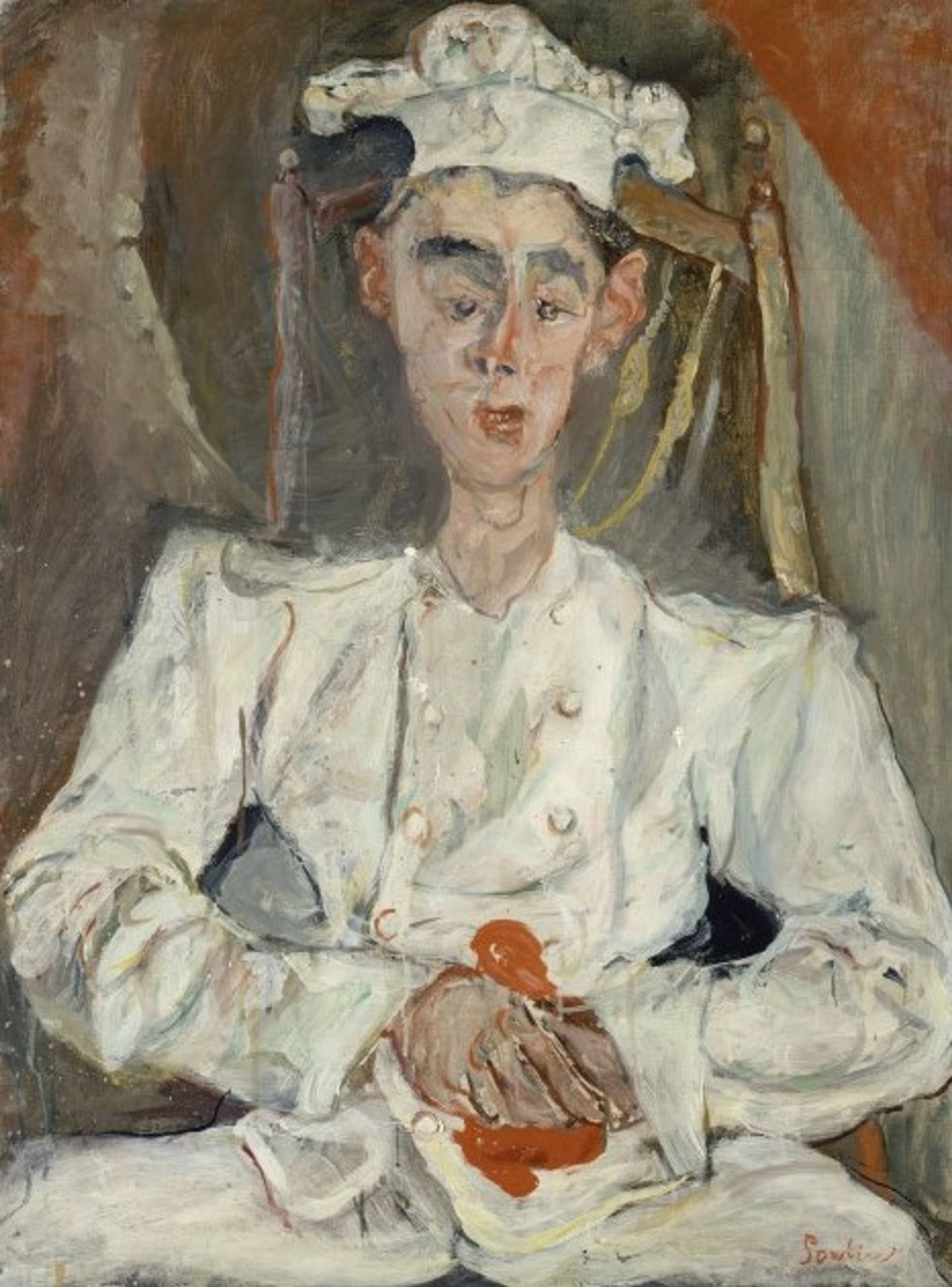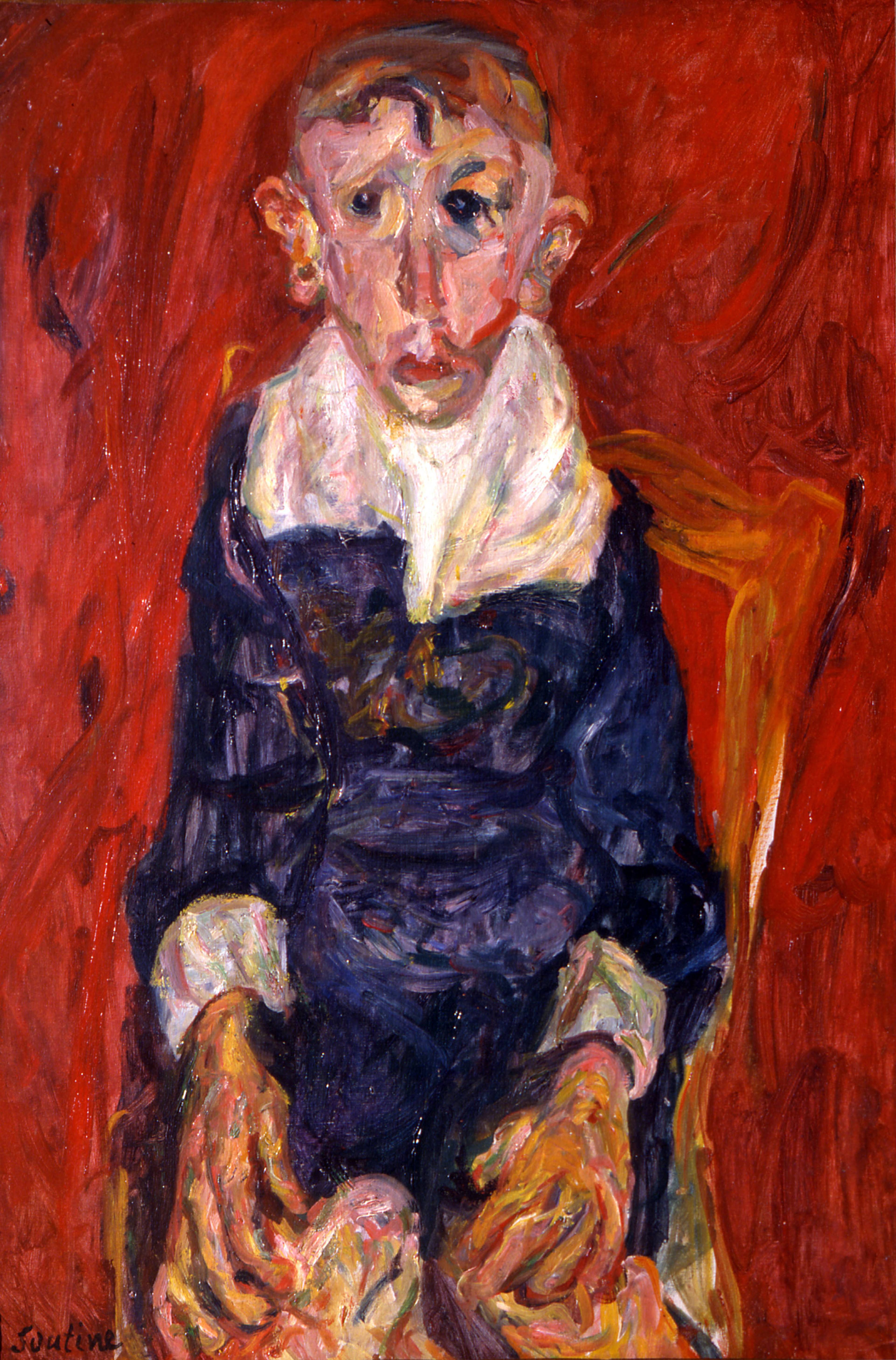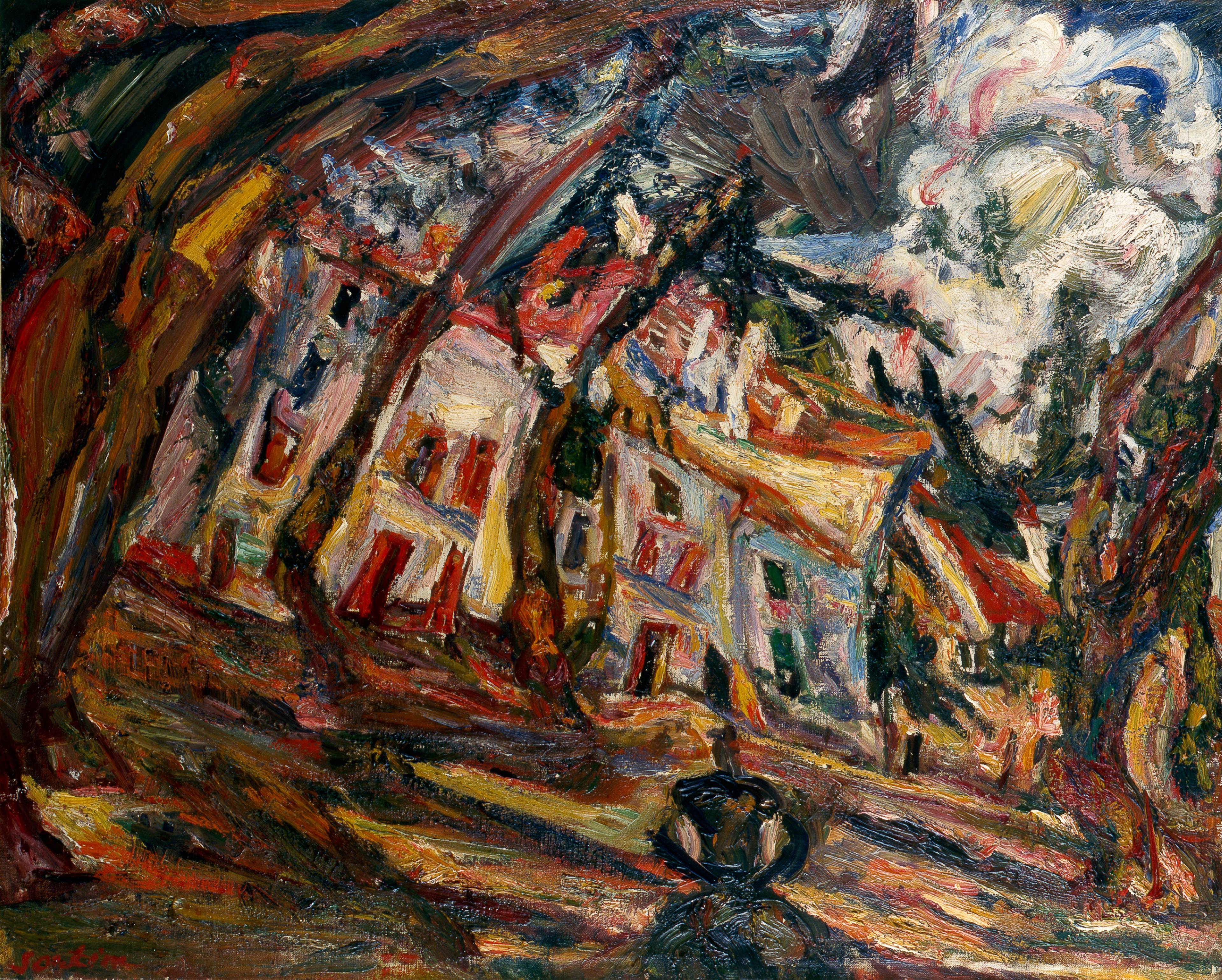Chaïm Soutine’s paintings may count as the rare kind of art to which the curatorial or educational support of contemporary exhibition practice is superfluous. Encountering a work by Soutine, you “see” what you “get” exactly by looking at it – the transcending of painterly and pictorial means into an image. Take, for instance Le Poulet suspendu devant un mur de briques (Chicken Hung Before a Brick Wall, 1925), a modestly sized painting from the collection of Kunstmuseum Bern, one of the many highlights of the Soutine retrospective curated by Susanne Meyer-Büser.
Indeed, we don’t have anything more than a meager, lifeless chicken, hanging slightly aslant against some dark background, an uncanny hole opening up behind a morose brick wall at the left side of the painting. The work leaves open whether the chicken was just strangled or is already dead flesh. An uneasy composition, the picture would be easy to brush off as belonging to the tradition of a vain nature morte, painted with a heavy hand and a muddy palette. Delicacy – or the horror of detail – shows through bristling contrasts, with bright reds and pure blues standing against thick layers of paint. Notoriously hard to pin down in all its ambivalent material, visual, and symbolic effects, the paint here has been kneaded like dough to evoke elementary motifs, the chicken’s naked breast and grotesquely elongated neck framed by feathery wings, brick stones, and mortar. Their painterly treatment is equally clumsy and refined. The scene is quite obviously taken from a model: Live and direct was Soutine’s usual practice, whether in the studio or en plein air, his transfer of observation into painterly/painted sensation evoking photographic exposures, though Soutine’s painted empathy is a realism of a categorically different kind.
View of “Gegen den Strom,” K20, Düsseldorf, 2023. Courtesy: Kunstsammlung NRW. Photo: Achim Kukulies
Literally “visual art,” Soutine’s might be readily dismissed: Marcel Duchamp suggested linking the “retinal” of painting with painters’ supposed “dumbness.” To make things worse, Soutine never compromised over the tradition of figurative painting. What some call “expressionist” – either to do him a favor, or to validate his influence on Willem de Kooning or Jackson Pollock – is, in fact, opposed to hardcore German “expressionism,” as Soutine avoids any aesthetic system or style that flirts with abstraction. Rather, a modest modernist and a traditionalist in his topics, Soutine insists not only on the conventional genres of portrait, landscape, and still life, but cultivates a fascination for the dirty, the poor, and the miserable. Even Soutine’s Céret landscapes, created in the farthest south of France, are, to misquote André Breton, more “convulsive” than “beautiful”: See, for instance, the crooked and curved La Place du village (The Village Square, 1920), most likely painted on an empty stomach. The all-over composition is fragile, out of balance. Trees, buildings, clouds, even the plaza itself push dangerously towards the painting’s center, where a lost, loosely sketched figure is a bare reminder of the laws of gravity.
It is a rare pleasure to meet a Soutine in German museums today. His oeuvre has been widely omitted by curators, collectors, and critics alike, both before 1933 and after 1945; only the 3rd edition of Documenta, in 1964, included a selection of his paintings. Soutine’s short oeuvre doesn’t sit well with the heroic history of modernism, anyway. Unfortunately, new, canon-critical art history – itself echoing the old avant-gardist impulse of radical progress and thus always at risk of blurring the narrative lines between modernism’s constant formal expansion and contemporary art’s thematic newness – has little to say about what art is: in this case, a painter’s oeuvre schooled by careful study of the Old Masters, Rembrandt especially.
La Vieille actrice (The Old Actress), 1922, oil on canvas, 92.1 x 65.1 cm
Le Petit pâtissier (The Little Pastry Cook) 1922–23, oil on canvas, 73 × 54
L’Idiot du village (Village Idiot), 1920, oil on canvas, 92 x 65 cm
Little is known about Soutine the person. Arriving in Paris from Smilavichy, a shtetl in present-day Belarus, in the summer of 1913, he found his way into a bohemian circle mostly of émigrés, many of whom, like Marc Chagall, Amedeo Modigliani, and Ossip Zadkine, were Jews like himself, some likewise from eastern Europe. French critics dubbed that circle L’École de Paris, throwing a skeptical eye on the foreigners and their lack of style or programmatic coherence. Otherwise, he died in poverty in 1943, under surgery, at forty-nine years of age, hiding from Nazi occupants.
Nearly forty years after Soutine’s last big retrospective in Germany, it is good to see a solid selection of some sixty works, mostly from the 1920s. Yet their presentation, which groups them according to genres, risks hiding the unique solution Soutine suggests. The variation in the color of the museum walls with each new genre clutters Soutine’s ambivalent modernity, which, for all too long, has been obscured by too-traditionalist or too-progressive readings of the history of modern art. The reason why such an artistic endeavor is relevant today – and against recent art-historical currents – could be pointed out with more care on the part of the museum.
La Place du village, Céret (Village Square at Céret), 1920, oil on canvas, 76 x 94 cm
___
“Gegen den Strom”
K20, Düsseldorf
2 Sep 2023 – 14 Jan 2024




